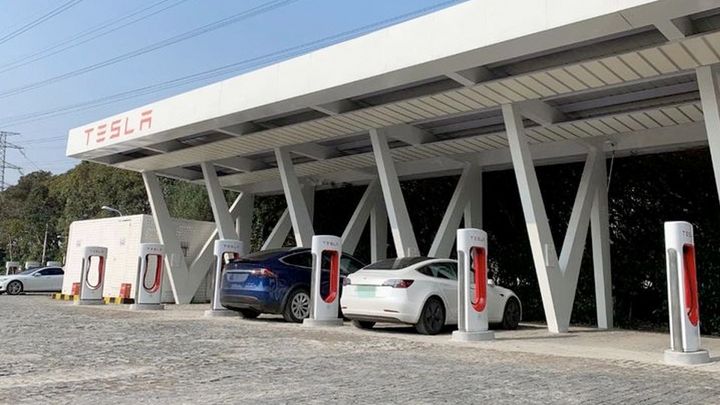The low cost of new energy vehicles is obviously better than that of fuel vehicles, but the experience of energy supplement of new energy vehicles has not reached the experience close to that of fuel vehicles. For example, a fuel vehicle can achieve a cruising range of hundreds of kilometers in a few minutes with a tank of oil, while a pure electric vehicle may take ten minutes, tens of minutes or more to achieve a high cruising range.

In order to shorten the recharging time of electric vehicles, the development of science and technology has given birth to the 800V high-voltage platform, the power changing mode and the current liquid-cooled charging pile. These new technologies are all aimed at solving a problem and shortening the charging time. Recently, a charging pile product claimed that charging for 5 minutes can achieve a cruising range of 300km.
Compared with 800V and power change, everyone should be familiar with it. What about the 600kW liquid-cooled charging pile? What kind of car can be used now?
First of all, the liquid-cooled charging pile and the 600kW charging pile are not particularly advanced technologies. The reason why they are not fully rolled out is that the layout of high-power charging stations is a big test for the local power grid construction, and the power grid construction in any place does not support the use of high-power charging piles.
Actually, the liquid-cooled charging pile is no longer a fresh product of science and technology. It has been more than a year since the first batch of liquid-cooled charging piles were commercialized. The earliest batch should be the V3 super charging pile launched by Tesla in 2020. It takes 15 minutes to achieve a maximum battery life of 250km, using liquid cooling technology.
Lifting the liquid-cooled charging pile again is the charging pile scheme announced by TELECOM in early April. It also uses liquid-cooled technology, which can increase the cruising range of the vehicle by 300km after charging for 5 minutes. At present, the compatible models are Guangzhou Automobile AION V, Tesla Model Y, and other models equipped with international liquid cooling interfaces.
If you are an electric car user, it should be easier to understand. Part of the problem of low charging efficiency and long charging time is that a lot of heat will be generated in the charging process, and the higher the power, the easier it is to cause the cable to heat up, which will bring unsafe and unstable factors.
Tesla and TELECOM charging piles, the bottom logic is to rely on high current to realize fast charging, and liquid cooling technology is used to solve the overheating problem of high current. The principle is not difficult to understand. It is just that a special circulation channel is set between the cable and the charging gun. The cooling liquid which can dissipate heat is added into the channel, and then the power pump pushes the liquid to circulate to take away the heat.
Some people are concerned that Tesla's technology on electric vehicles and charging piles should be in the leading position, but why is the charging pile of TELD better than Tesla V3? The liquid-cooled charging device announced by TELECOM supports the maximum current of 600A and the maximum output power of 600kW: The maximum current supported by Tesla V3 charging pile was only 250kW before, but it was only proposed to be upgraded to 300kW last year.
The maximum output power of 600kW mentioned here should not be a single charging pile, but an array of charging piles to output the maximum power to charge the vehicle. Personally, I think that each charging pile should be able to support the maximum output power of 600kW, and the power should be split. After all, a charging station is equivalent to a small substation, and high-power charging will also test the local power grid.

Although the charging pile using liquid cooling technology has a faster charging speed, its difficulty lies in the sealing of coolant and cable. The environment where the charging pile is installed may face extreme weather, harsh environment and other factors, so the liquid-cooled cables used need to pass the tests of high temperature resistance, corrosion resistance, explosion resistance, weather resistance and low temperature resistance.
In addition, the industrial chain of liquid-cooled charging line is actually quite mature. Liquid cable belongs to the category of cable industry. Before that, there was a kind of water-cooled cable product which was widely used. Now it is necessary to replace the internal water with cooling liquid.
In the existing production scheme of liquid-cooled cable, the general situation is that an empty pipe is added to the cable, and cooling fluid is added to the empty pipe. The optimization space of this scheme has the following points: the coolant is not in direct contact with the conductor, and the heat transfer efficiency is low; The existing cable adopts pu tube as the outer layer of the cable, which is easy to deform and block the flow of coolant under the external force.
Although the technology is not advanced, the landing application can indeed be improved, so this technology is "useful, easy to use and usable" for us, but there are not many applicable models at present.
According to the information released by TELECOM, there are very few models that can be matched by the liquid-cooled charging pile with an output power of 600kW at present, which means that only the above mentioned cars can realize the charging capacity of 300km in 5 minutes by using this charging pile. All these products have a prerequisite, that is, they must have an international liquid cooling interface.
To expand this topic, the closed loop of electric vehicle charging is composed of several link areas, such as vehicle fast charging interface, charging cable and charging box. Then the liquid-cooled cable solves the problem of high temperature between the charging wire and the box, and can ensure that the cable and the box will not overheat in this link. However, if the maximum power of 600kW is continuously output at the interface end of the vehicle without power restriction, overheating will still occur at the interface end of the vehicle.
Therefore, at this stage, the 600kW liquid-cooled charging pile can only exert its full power on pure electric vehicles with liquid-cooled interfaces, and achieve the endurance of 300km for 5 minutes.
Different types of vehicles have different compatibility with special electric liquid-cooled charging piles. We can take Tesla as an example for this problem. Tesla's 250kW liquid-cooled charging pile V3 has been on the market for some time, so its compatible Model S include Model S, Model X, Model 3 and Model Y. According to the test, only Model 3 and Model Y long-life models can fully use 250kW peak power, because they use 21700 battery system+new thermal management technology.

Then the model with relatively old technical version, the maximum charging power on V3 is only 200kW. Then the same should be true for the liquid-cooled charging pile reflected in TELD. Only products with newer technical versions and liquid-cooled interfaces can use the maximum power of 600kW, otherwise the maximum power will be limited like Tesla V3 charging pile.
It is possible that some users have no concept of 600kW up to now. The most common fast charging pile power in State Grid is 60kW and 120kW, and the general power of household charging piles is about 7kW. At present, enterprises with 600kW charging piles with maximum output power have brands such as TELECOM and GAC Aian.
Therefore, at present, the 600kW liquid-cooled charging pile can greatly improve the experience of electric vehicle energy supplement, but it also has limitations. Only qualified electric vehicle products can enjoy the demand of completing energy supplement in a short time.